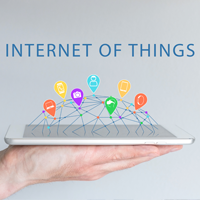We all know that the internet of things (IoT) is booming, with millions of devices already on the market and rapid growth rates predicted over the next five years. But alongside this comes massive amounts of data to be stored, managed and analysed. So how can mobile network operators support the internet of things, and how can they successfully manage this influx of data?
Let’s start with the basics, what is Cellular IoT?
The Internet of Things (IoT) is a collective term for devices connected to the internet, enabling data to be exchanged without any human interaction. Cellular IoT (CIoT) is the ability of these devices to connect to existing mobile networks, which is allowing operators to create new revenue streams. Ofcom currently estimated that there are 40 million connected devices, with Cisco predicting that the global numbers will increase to 50 billion by 2020 – that’s big business!
So, how can mobile networks support the increased number of connections?
Whilst LTE delivers LTE-Advanced higher speed, there is a further evolution via LTE-M, referred by some equipment manufacturers as 4.5G technology. This will enable a much greater number of connections per cell (up to 100 times higher than that of 4G), with devices having improved sensitivities, giving better coverage (as compared to 2G systems) whilst consuming low powers (10 years from 2 AA batteries). Just a few weeks ago Huawei launched its 4.5G smartband, claiming it as the world’s first LTE-M wearable. Other manufactures look sure to follow suit, with Orange recently announcing its plans to generate €600 million from IoT and M2M over the next 5 years. Longer term, most of the globe is expected to have 5G by 2020, offering further support for the increased number of connections from IoT.
How do you apply big data analytics to IoT?
IoT has the potential to touch virtually all areas of business, industry and consumer life, creating huge amounts of data constantly being streamed across the network, to servers and to the cloud. The key is extracting information and knowledge from this data as it is being ingressed, which means applying analytics, as the name implies, in the data stream as opposed to the more traditional process in which data is first stored and then analysed. In-stream analysis makes it possible to identify and examine patterns in real time, enabling alerts or actions to be automatically initiated. Clearly, the data, once stored, offers great potential for historic and complex correlation and analytics; the two models of data processing combined offer the most complete means of managing data to ever growing customer demands. Organizations are already struggling with collecting, storing and analysing their existing data streams, and with the additional data that IoT will generate, these problem will only increase and remember the biggest data management challenges result from the number of transactions to be processed rather than the overall volume of the data.
Introducing the solution – Zen Unified Service Assurance Software
Zen is a next generation, real time unified service assurance solution, designed specifically for the telecommunications sector. It collects, stores, automates and presents huge amounts of network data in real-time, and is used by leading CSP’s across Europe and the Middle East.
The software has been designed with the purpose of adapting to change, which means it can quickly and easily integrate new information streams for the rapidly evolving range of IoT devices. It is highly scalable, which means it can grow in line with the business as the number of IoT connections increase. Its real time functionality allows users to quickly see data patterns or alerts, allowing rapid network optimisation and management, leading to improved customer experience management, and overall satisfaction.
To find out more about the benefits of Zen, arrange a demo today.

